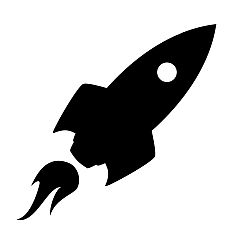Nitrogen is a chemical element with the symbol N and atomic number 7.
In the aerospace context, nitrogen is a gas that is used in a variety of applications. Nitrogen is an inert gas, which means it does not react with other elements or compounds under normal conditions, making it safe to use in aircraft and spacecraft.
Examples of how Nitrogen is used in aerospace industry include:
- Pneumatic systems: Nitrogen is used in pneumatic systems, such as brake systems and landing gear, to power the movement of actuators and other components. Nitrogen is preferred over compressed air because it is less likely to corrode metal parts and it does not absorb moisture which can cause freezing at high altitude.
- Inflation of aircraft and spacecraft tires: Nitrogen is used to inflate the tires of aircraft and spacecraft, instead of air, which can contain moisture and oxygen. Because of Nitrogen's inert nature, it does not react with rubber, reducing the risk of explosions during operation.
- Fuel tank inerting: Nitrogen is used to purging and inerting the fuel tank of aircraft and spacecraft, as it does not support combustion and can prevent the accumulation of explosive gases inside the tank
- Cryogenic Cooling: Nitrogen is used to cool electronic components and other subsystems on aircraft and spacecraft, by using a cycle of evaporating and condensing liquid nitrogen.
- Life Support Systems: Nitrogen is also used in life support systems in spacecraft, where it serves as a source of breathable air and to provide pressure inside the cabin.
It's also worth noting that Nitrogen is widely available and relatively inexpensive, making it a convenient and cost-effective option for these various aerospace applications.
Related Articles to the term 'Nitrogen' | |
| 'Iridium' | ■■■■■■■■ |
| In the aerospace industry, iridium is a chemical element that is used in a variety of applications. Iridium . . . Read More | |
| 'Oxygen' at top500.de | ■■■■■■■ |
| Oxygen is a chemical element with symbol O and atomic number 8. It is a member of the chalcogen group . . . Read More | |
| 'Lithium' at top500.de | ■■■■■■■ |
| Lithium is a chemical element with symbol Li and atomic number 3. It is a soft, silver-white metal belonging . . . Read More | |
| 'Tungsten' at top500.de | ■■■■■■■ |
| Tungsten is a chemical element with the symbol W and atomic number 74. It is a hard, dense, steel-gray . . . Read More | |
| 'Molybdenum' | ■■■■■■■ |
| Molybdenum is a chemical element with the symbol Mo and atomic number 42 which is located in period 5 . . . Read More | |
| 'Actuation' | ■■■■■■■ |
| Actuation refers to the process of activating or controlling a device or system by means of an external . . . Read More | |
| 'Dioxide' at top500.de | ■■■■■■ |
| An oxide is a chemical compound that contains at least one oxygen atom and one other element in its chemical . . . Read More | |
| 'Dioxide' at environment-database.eu | ■■■■■■ |
| "Dioxide" refers to a compound that contains two atoms of oxygen and one other element, such as carbon . . . Read More | |
| 'Combustor' at environment-database.eu | ■■■■■■ |
| Combustor: A combustor (also referred to as a combustion chamber) is a critical component in various . . . Read More | |
| 'Uranium' at top500.de | ■■■■■■ |
| Uranium is described as a mildly radioactive element with two isotopes which are fissile (U-235 and U-233) . . . Read More | |
